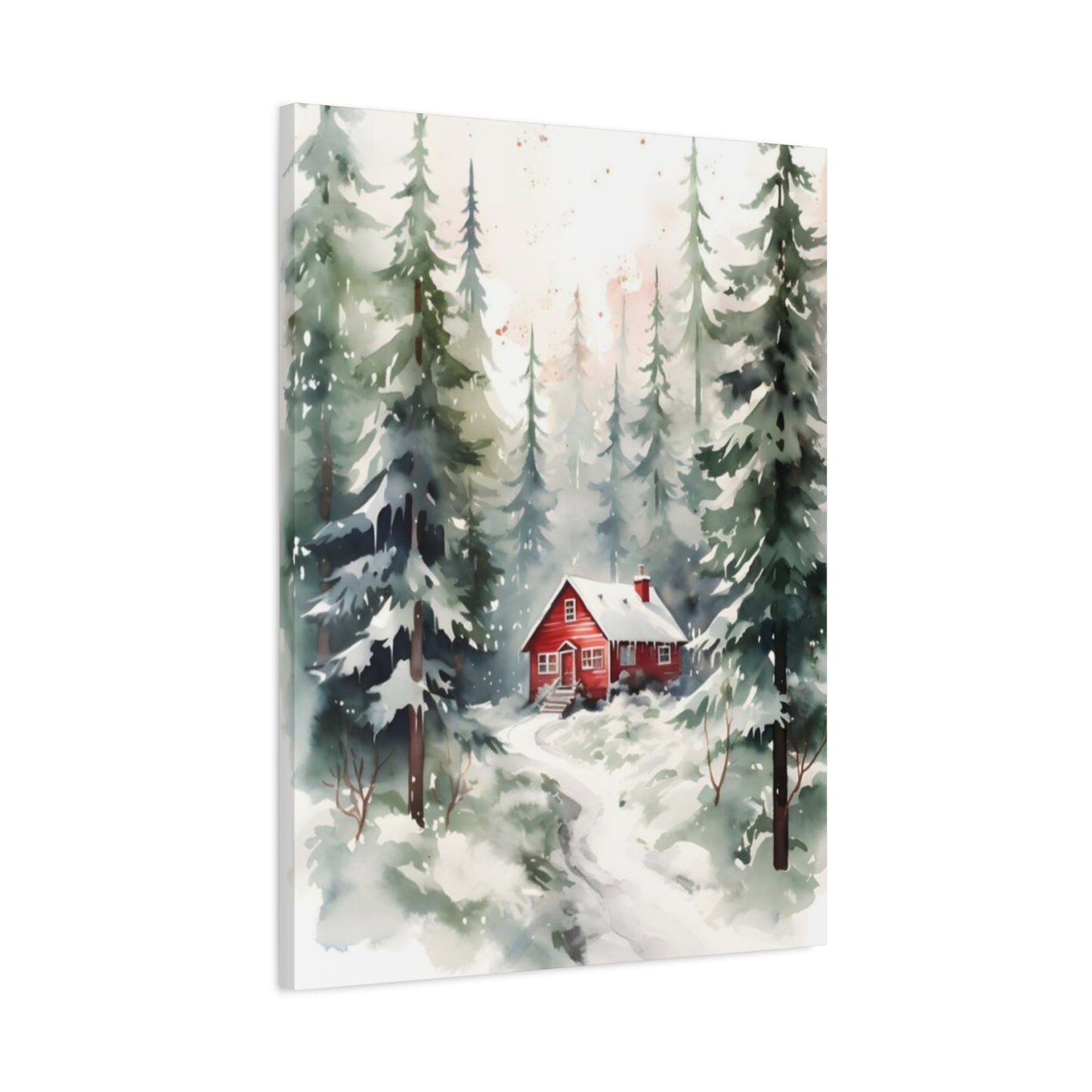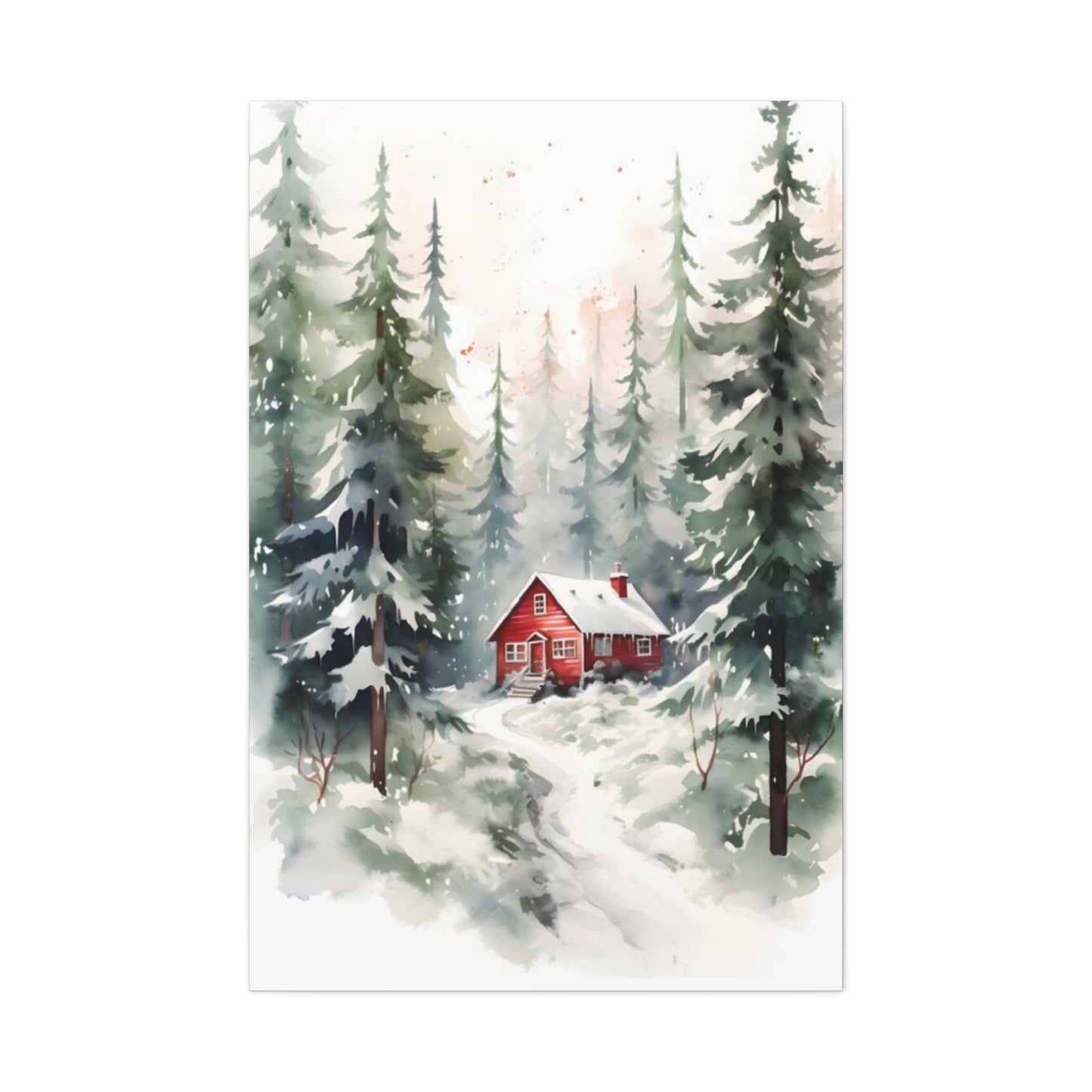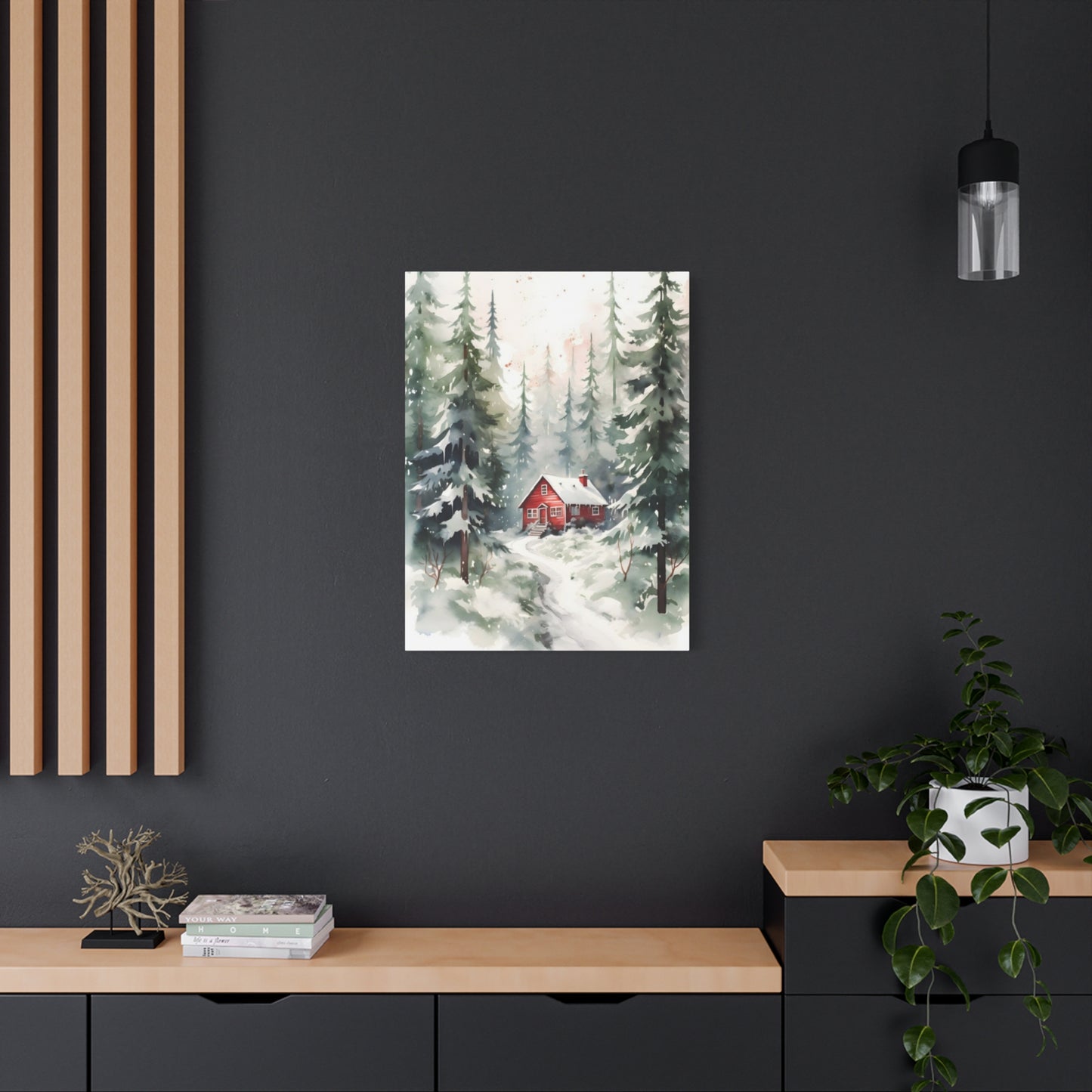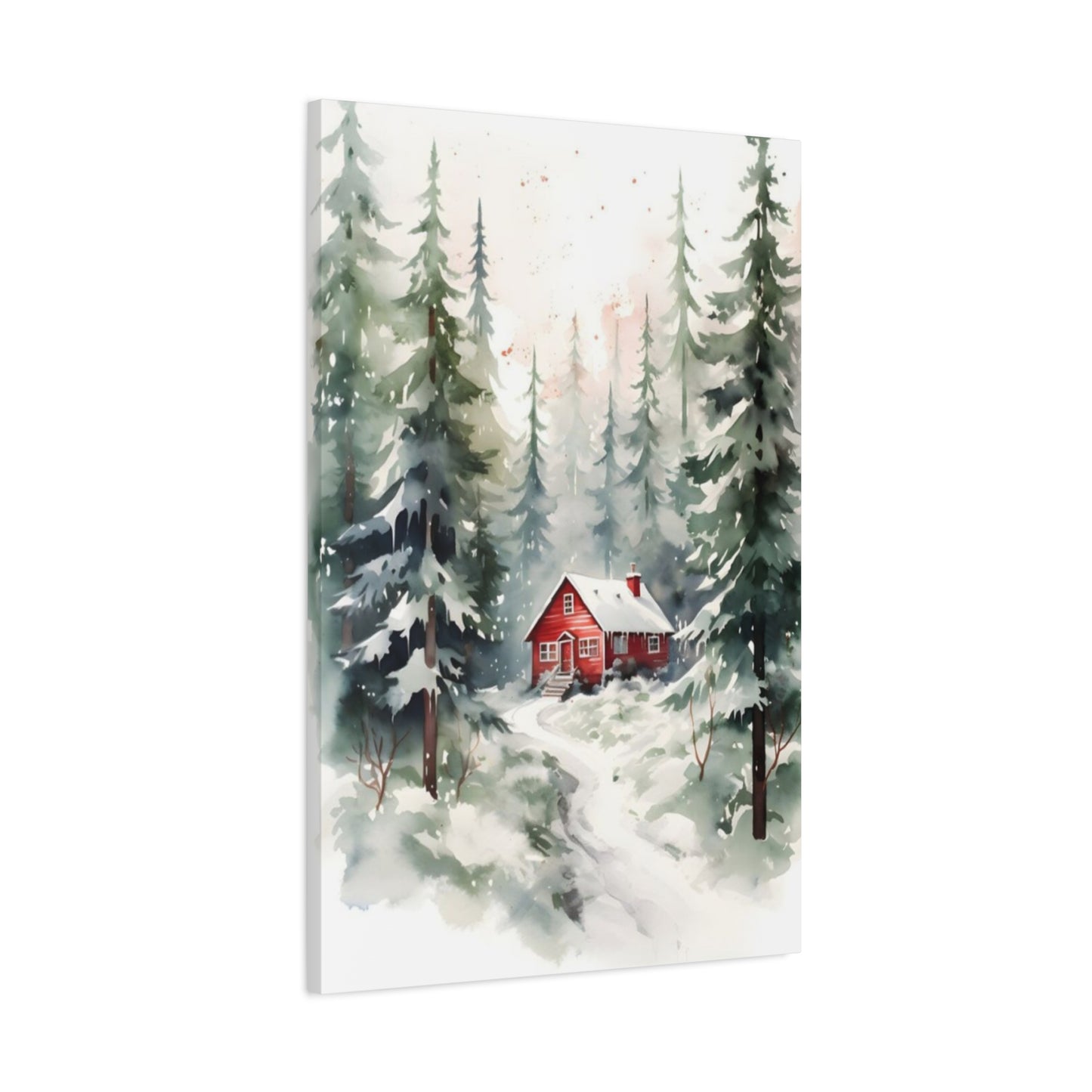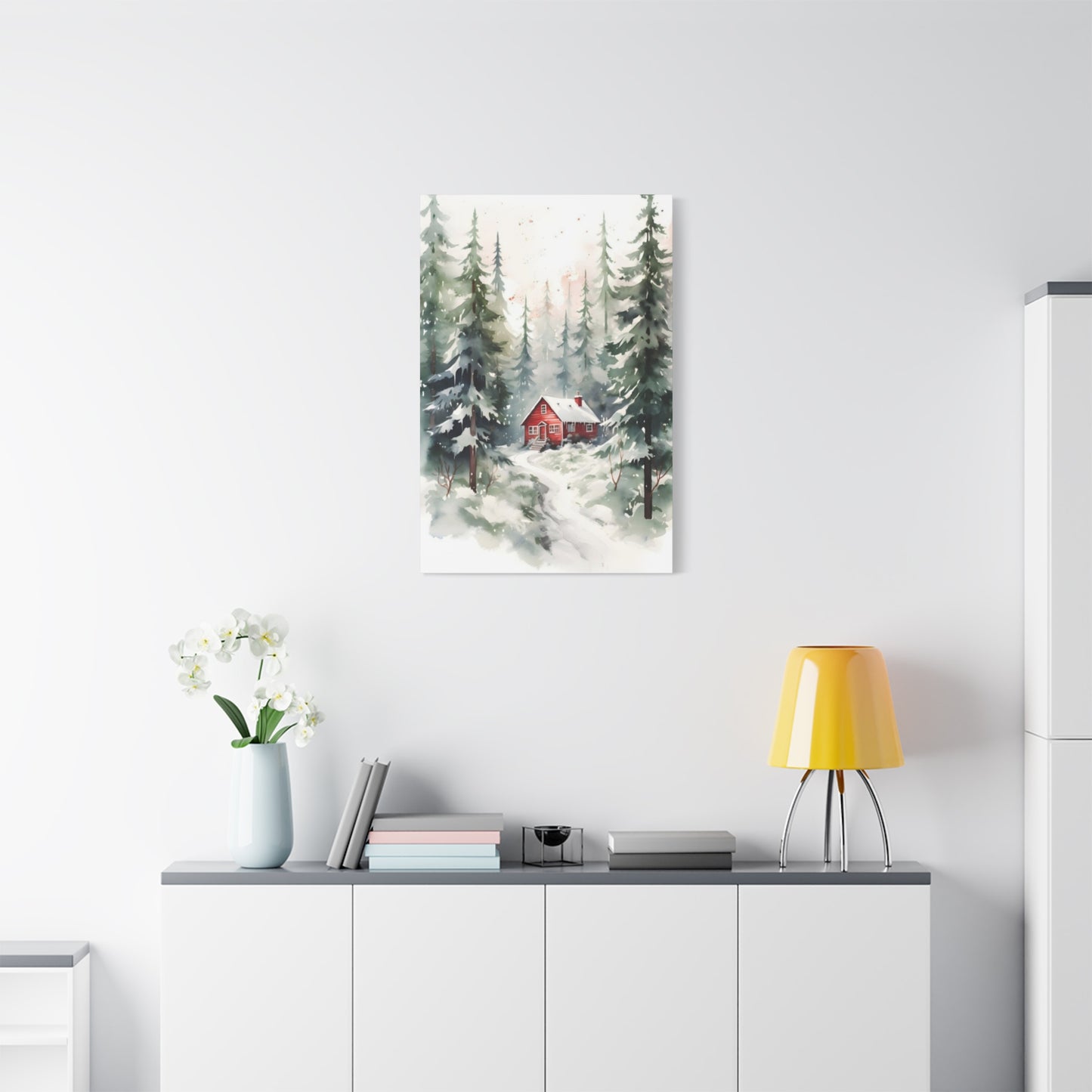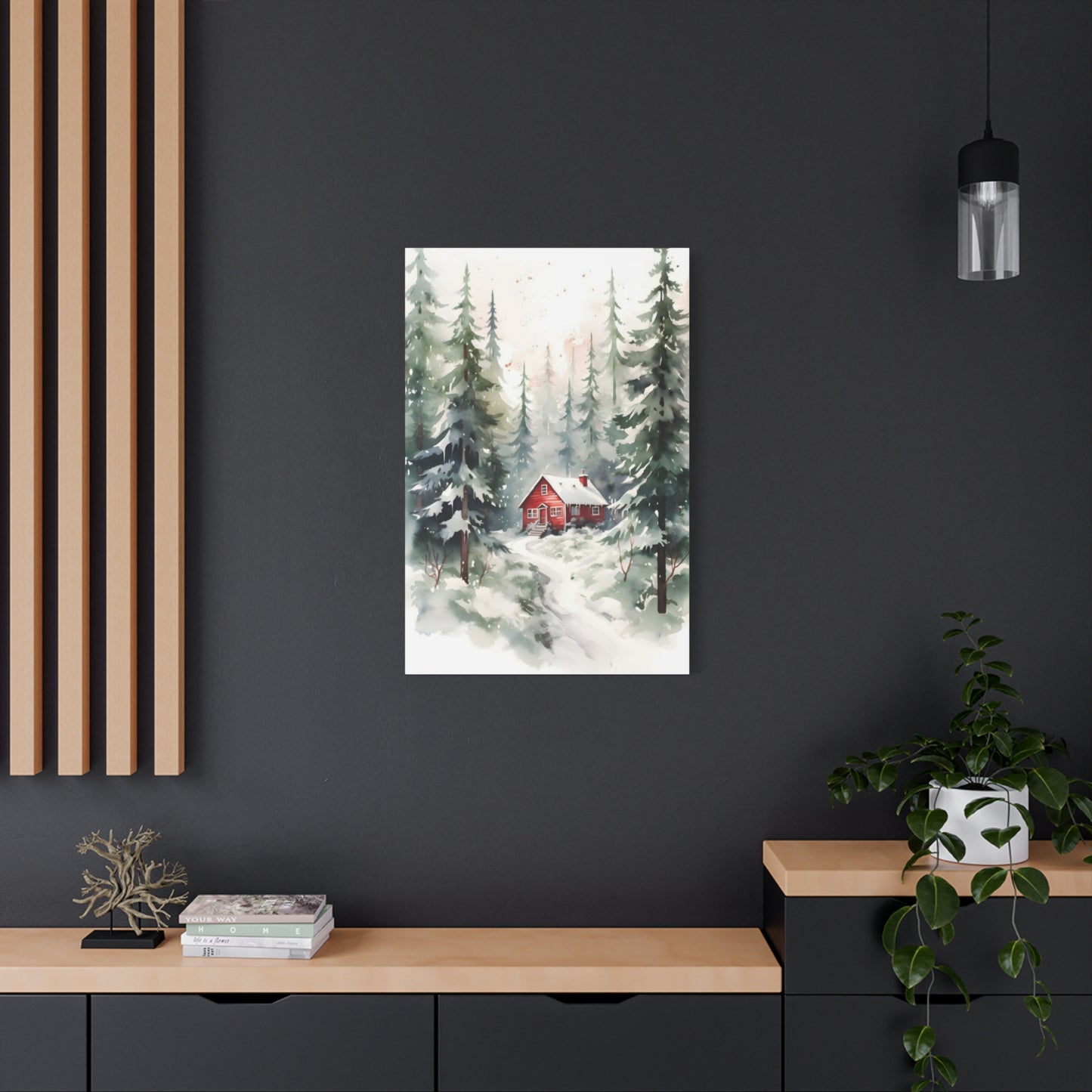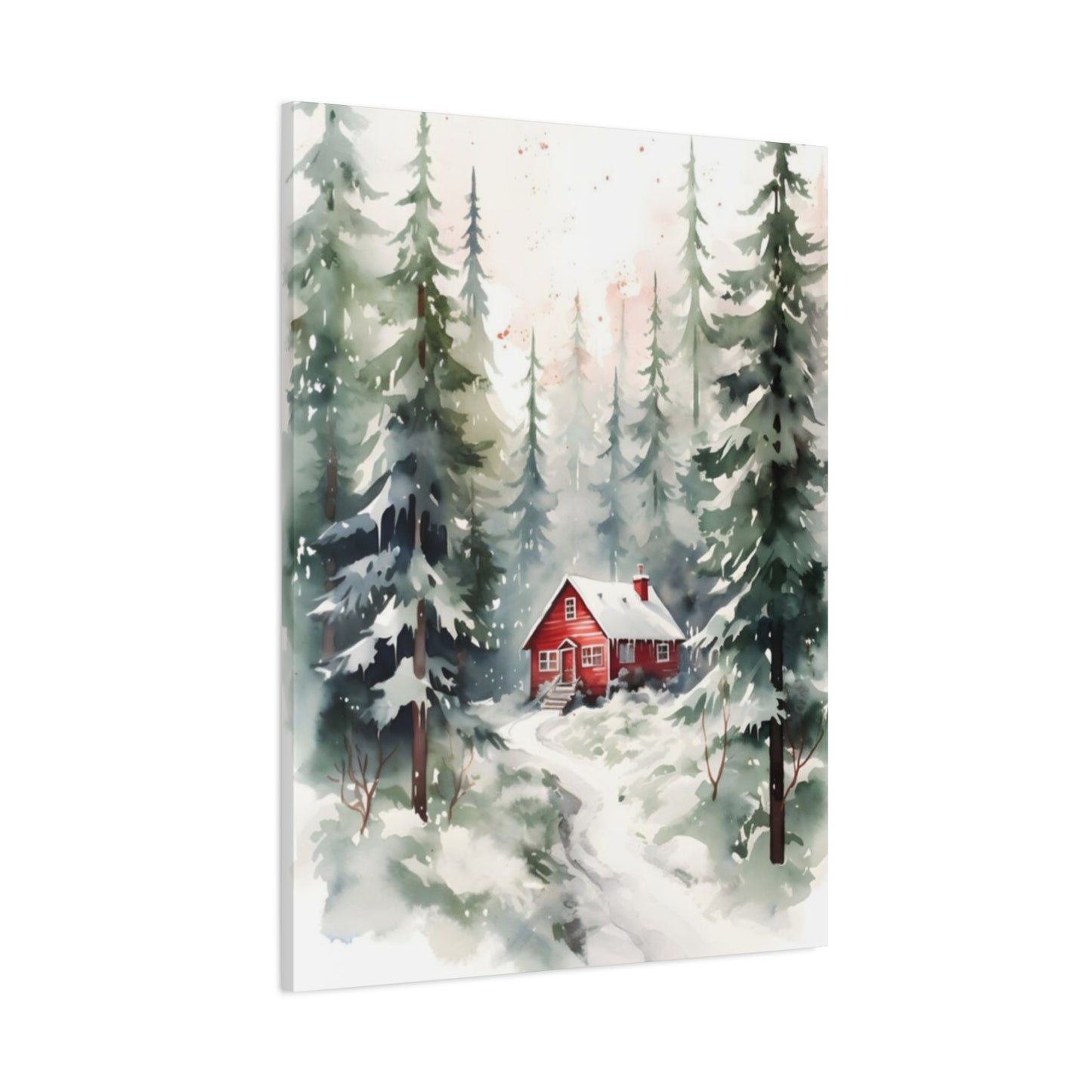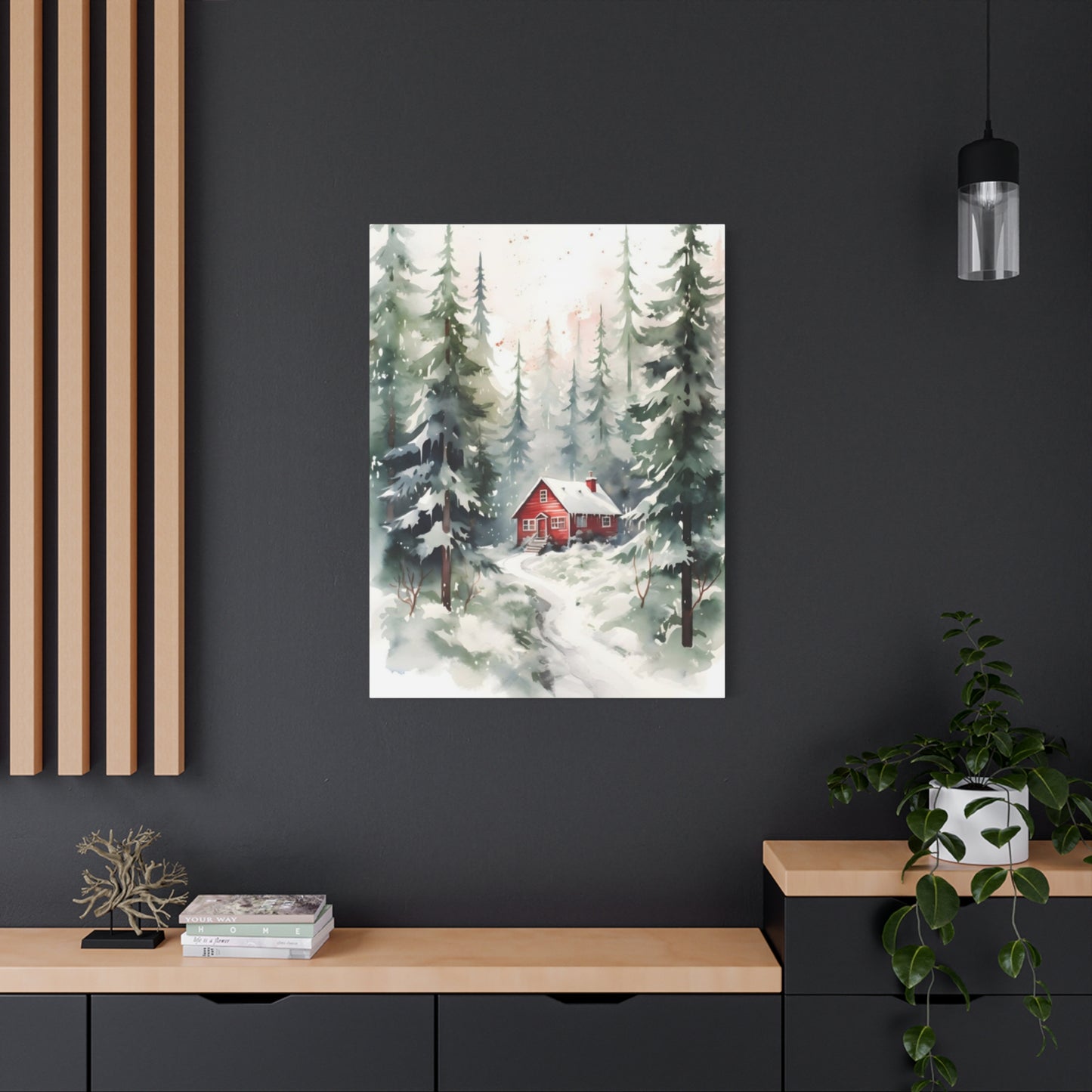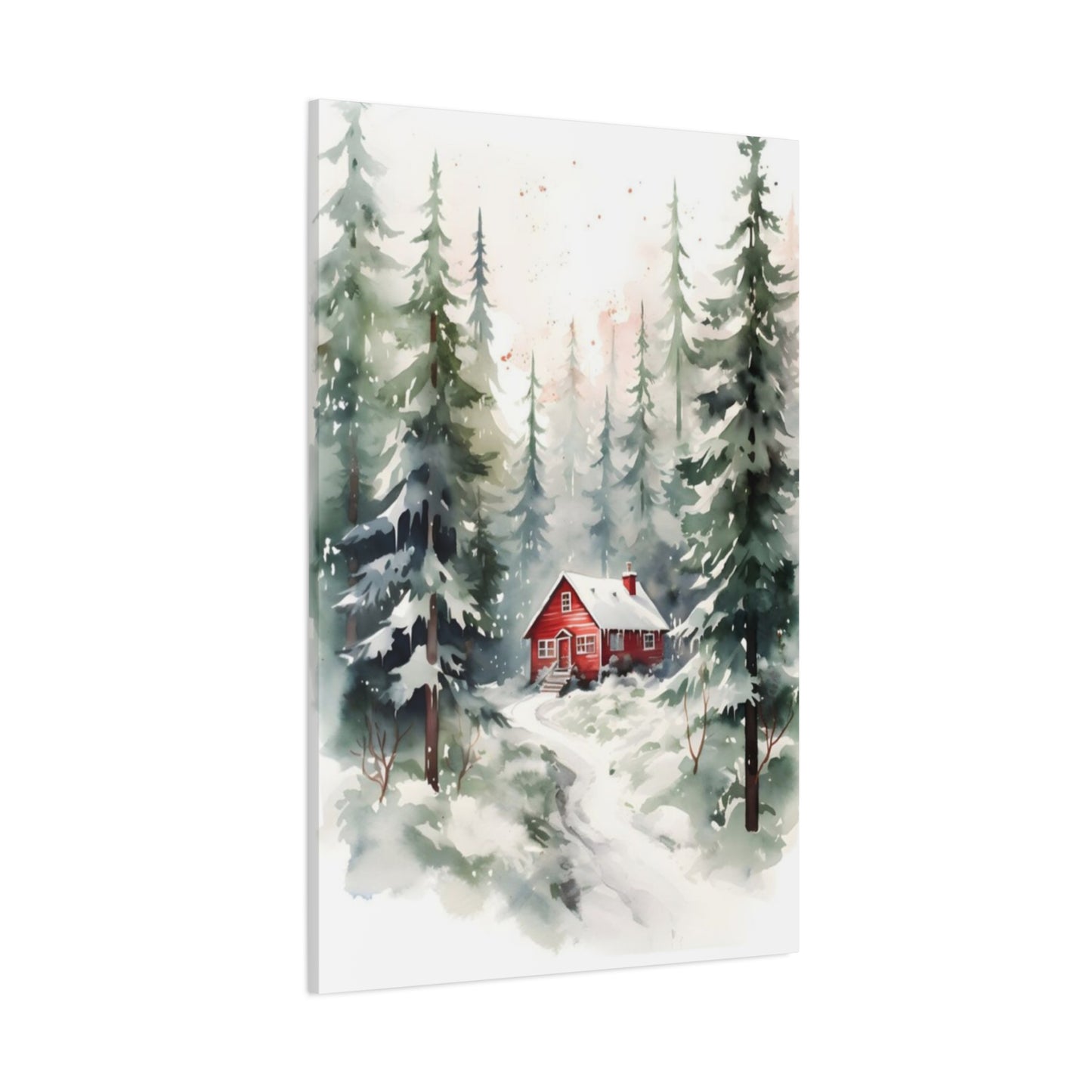Understanding the Rustic Allure of Red House in Wild Wall Art
The enchanting aesthetic of the red house in wild wall art represents one of the most compelling visual narratives in contemporary interior design. These stunning pieces capture the essence of countryside charm and bring an unmistakable warmth to any living space they inhabit. The rustic allure of this particular art form lies in its ability to transport viewers to a simpler time, where nature reigns supreme and human habitation exists in harmonious balance with the untamed landscape surrounding it.
Red house in wild wall art pieces showcase homes nestled within expansive natural environments, where verdant fields, towering trees, and sprawling wilderness form an intricate backdrop for the warm crimson tones of the structure itself. The juxtaposition between the human-made dwelling and its wild surroundings creates a visual tension that speaks to something deep within the human psyche, a longing for connection with nature while maintaining the security and comfort of shelter. This compelling duality makes red house in wild wall art an exceptional choice for those seeking to infuse their interiors with both aesthetic beauty and philosophical depth.
The rustic charm emanates from every brushstroke and color choice in these artworks. Artists who create red house in wild compositions understand that they are not simply depicting a structure or landscape; instead, they are crafting a narrative about the human experience, our place in the natural world, and the beautiful contradiction between civilization and wilderness. The red hue of the central structure serves as a focal point that grounds the viewer's attention while the surrounding wild landscape provides context and meaning to this anchoring element.
When you choose to incorporate red house in wild wall art into your home, you are making a statement about your values and aesthetic preferences. You are declaring that beauty can be found in the fusion of human craft and natural majesty, that solitude holds value in our increasingly connected world, and that the rustic aesthetic transcends mere decoration to become a form of personal philosophy. This understanding elevates red house in wild wall art beyond simple decoration into a meaningful component of your interior narrative.
Bringing Countryside Warmth Indoors with Red House in Wild Prints
The experience of bringing countryside warmth indoors through red house in wild prints represents a transformative approach to interior decoration that goes far beyond hanging a picture on a wall. These prints serve as windows into pastoral worlds, offering occupants of urban apartments, suburban homes, and contemporary dwellings access to the sensory and emotional experiences associated with rural living. The warmth conveyed through red house in wild prints operates on multiple levels: the literal warmth of the color red itself, the metaphorical warmth of shelter and home, and the emotional warmth of connection to natural landscapes.
Countryside warmth is not merely a visual characteristic but rather a holistic experience that encompasses comfort, authenticity, and a sense of belonging to something larger than oneself. When red house in wild prints adorn your walls, they create an immediate atmosphere shift, transforming sterile modern spaces into environments that feel lived-in, genuine, and deeply human. The prints act as conduits through which the essence of rural living flows into contemporary interiors, softening hard edges and introducing organic elements that humanize spaces that might otherwise feel cold or impersonal.
The process of selecting and displaying red house in wild prints requires consideration of how these pieces will interact with existing décor elements. The warmth these prints convey intensifies when they are framed in natural wood materials that echo the rustic aesthetic they represent. Pairing red house in wild prints with textiles like wool, linen, and cotton—materials that evoke rural craftsmanship—creates a cohesive environment where every element contributes to the overall sensation of countryside charm. The prints themselves become anchors around which other design choices naturally organize themselves.
For those dwelling in urban environments far removed from actual countryside landscapes, red house in wild prints provide an essential psychological service. They offer daily reminders of the natural world's existence and beauty, serving as meditative focal points that calm the mind and reduce stress. Research in environmental psychology demonstrates that exposure to natural imagery and rural aesthetics promotes relaxation and improved mental wellbeing. By incorporating red house in wild prints into interior spaces, inhabitants create personal sanctuaries where the pressures of modern life recede and the gentle influence of countryside warmth can work its restorative magic.
Why Red House in Wild Wall Art Captivates Nature Lovers
The particular appeal of red house in wild wall art to nature enthusiasts stems from its sophisticated representation of the relationship between human habitation and the natural environment. Nature lovers are drawn to these compositions because they celebrate the integrity of wild landscapes while acknowledging the legitimate human need for shelter and community. Red house in wild wall art does not position nature and civilization as enemies in an eternal struggle; instead, these artworks propose a more nuanced relationship where each element enhances and gives meaning to the other.
For individuals who identify as nature lovers, red house in wild wall art represents a visual manifestation of ideals they hold dear but may struggle to achieve in their daily lives. The compositions depict a scenario where humans live in genuine connection with natural surroundings, where the environment surrounding one's home is respected and preserved rather than conquered or eliminated. The presence of the red house provides a human focal point that prevents the artwork from becoming a purely landscape-focused piece, instead creating a narrative that includes human presence as an integral part of the natural scene rather than an intrusion upon it.
The artistic approach to depicting red house in wild compositions often emphasizes the seasonal changes, weather patterns, and dynamic qualities of the surrounding landscape. These artworks rarely present static, unchanging scenes; instead, they capture moments in time where light, shadow, and atmospheric conditions create mood and drama. Nature lovers appreciate this temporal awareness, understanding that truly meaningful connection with wild places requires accepting and embracing the constant flux and transformation inherent to natural systems. Red house in wild wall art captures this perpetual motion and change, offering viewers a representation of nature that feels authentic and true to their own experiences.
Additionally, nature lovers are attracted to red house in wild wall art because these pieces validate and celebrate alternative ways of living that prioritize environmental consciousness and sustainability. The imagery of humans living in small, focused structures within expansive natural landscapes resonates with ecological values emphasizing reduced consumption, simpler living, and minimal environmental impact. By displaying red house in wild wall art, nature enthusiasts make a visual statement about their values and aspirations, creating interior environments that reflect and reinforce their commitment to environmental awareness and respect for the natural world.
Symbolism Behind the Red House in Wild Landscape Art
The symbolic language contained within red house in wild landscape art operates on multiple interpretive levels, allowing viewers to extract personal meaning while also engaging with universal themes about human existence and our relationship with nature. The red color of the central structure carries profound symbolic weight across cultures and artistic traditions. Red traditionally represents warmth, passion, life force, and human vitality, making it an ideal color choice for a dwelling that must be perceived as a center of human activity and emotional significance within the surrounding wilderness.
The juxtaposition of the contained, ordered structure of the house against the expansive, uncontrolled wildness surrounding it creates fundamental symbolic tension that mirrors internal conflicts within the human psyche. This opposition represents the eternal struggle between our desire for security and stability and our equally profound need for freedom and exploration. The red house symbolizes our attempt to create order and meaning in a world that often feels chaotic and indifferent, while the wild landscape surrounding it represents the underlying reality that human systems exist within and depend upon larger natural forces beyond our control or understanding.
In many red house in wild landscape artworks, the small size of the house relative to the surrounding environment suggests humility and an acknowledgment of human smallness within the cosmic scale of natural systems. This symbolic statement runs counter to dominant cultural narratives that position humans as masters and controllers of nature. Instead, red house in wild landscape art suggests a more balanced perspective where humans maintain their right to exist and build communities while simultaneously accepting that their presence is relatively minor within the larger context of planetary systems and natural processes that predate human civilization by millions of years.
The red house also functions symbolically as a beacon or anchor point for the viewer's consciousness, providing a stable reference point from which to contemplate the surrounding wilderness. This symbolic function mirrors the psychological role that home plays in human development and emotional health. Home represents stability, identity, and belonging; these fundamental human needs do not disappear simply because we wish to celebrate wildness and natural beauty. Red house in wild landscape art recognizes and honors these legitimate needs while simultaneously celebrating the majesty and grandeur of untamed nature that exists beyond the home's protective sphere.
Red House in Wild Canvas: A Blend of Solitude and Serenity
The artistic presentation of red house in wild canvas pieces creates unique environments where viewers can contemplate the profound relationship between solitude and serenity, understanding these concepts not as isolation or loneliness but rather as opportunities for genuine self-reflection and peaceful existence. Canvas artworks depicting red houses within wild landscapes possess an inherent capacity to communicate stillness and quietude, inviting viewers into a meditative space where the noise and chaos of daily life can temporarily recede from consciousness.
Solitude as represented in red house in wild canvas work does not carry negative connotations of loneliness or social rejection; instead, it suggests the valuable experience of being alone with one's thoughts in a beautiful, nurturing environment. The canvas artworks typically employ composition techniques that emphasize open spaces, uncluttered visual fields, and breathing room that allows viewer attention to move freely through the composition without encountering visual chaos or competing focal points. This compositional approach creates a psychological sensation of openness and freedom that mirrors the emotional experience of healthy solitude.
The serenity conveyed through red house in wild canvas presentations emerges from the careful balance of elements and the artist's intentional use of color palettes that promote calm and introspection. Many such artworks employ softer color transitions, avoiding harsh contrasts that might create visual tension or agitation. The wild landscape surrounding the red house in canvas presentations often includes elements like still water bodies, rolling hills, or peaceful meadows that further reinforce the sense of tranquility and restful contemplation. These visual choices combine to create an overall effect that genuinely soothes the viewer's nervous system and promotes a state of psychological ease.
The red house itself, occupying the central position within these canvas compositions, represents the possibility of achieving serenity while maintaining human connection and warmth. The canvas format, with its substantial physical presence and tactile quality, allows these artworks to function as powerful visual anchors in interior spaces, continually inviting occupants toward contemplative states of mind. By positioning a red house in wild canvas artwork in a prominent location within one's home, residents create a focal point that consistently reminds them of the availability of solitude and serenity, encouraging them to seek these psychological states regularly rather than viewing them as rare luxuries.
Decorating Rustic Interiors with Red House in Wild Artwork
The process of incorporating red house in wild artwork into rustic interior design requires thoughtful consideration of how these pieces integrate with existing elements and contribute to the overall aesthetic and psychological atmosphere of the space. Rustic interior design emphasizes natural materials, earthy color palettes, and a sense of authenticity that rejects overly polished or artificially perfected aesthetics. Red house in wild artwork fits naturally into this design philosophy because these pieces typically celebrate natural elements, employ warm color schemes, and possess the genuine, unrefined quality that defines rustic aesthetic traditions.
When decorating rustic interiors with red house in wild artwork, consider the placement of pieces in relation to other design elements and focal points within the room. A well-chosen red house in wild artwork can serve as the primary visual anchor around which other design decisions organize themselves, or it can function as a complementary accent piece that supports and reinforces existing design themes. The size and scale of the artwork should correspond to the dimensions of the room and the wall space available; oversized pieces can overwhelm smaller spaces, while undersized artwork can appear lost in spacious rooms with high ceilings.
Framing choices significantly influence how red house in wild artwork integrates into rustic interiors. Natural wood frames in warm tones like medium brown, golden oak, or weathered finishes enhance the rustic qualities of these artworks while creating visual continuity between the piece and other wooden furnishings and structural elements within the room. Reclaimed wood frames offer the most authentic rustic presentation, carrying visible knots, grain variations, and surface irregularities that demonstrate the frame's history and connection to natural processes. This intentional preservation of imperfection aligns perfectly with the philosophy underlying both red house in wild artwork and rustic interior design generally.
Pairing red house in wild artwork with complementary décor elements creates a cohesive interior environment where each piece contributes to a unified artistic vision. Consider surrounding the artwork with natural-fiber textiles like wool blankets, linen cushions, or cotton throws that echo the natural materials often depicted in the artworks themselves. Stone accents, wrought iron fixtures, and reclaimed architectural elements combine with red house in wild artwork to create spaces that feel genuinely connected to rural traditions and countryside living. The cumulative effect of these coordinated design choices transforms ordinary rooms into authentic rustic sanctuaries that transport inhabitants into a different temporal and geographical reality.
The Emotional Impact of Red House in Wild Wall Décor
The psychological and emotional effects generated by red house in wild wall décor extend far beyond simple aesthetic appreciation, instead creating profound shifts in how inhabitants experience and relate to their interior environments. These artworks consistently produce feelings of calm, groundedness, and emotional safety in viewers who spend sustained time contemplating their imagery. The specific mechanism through which red house in wild wall décor generates these emotional responses involves multiple psychological and physiological systems working in concert to create net positive mental health outcomes.
Emotional safety forms the foundation of red house in wild wall décor's psychological impact. The representation of a secure dwelling nestled within natural surroundings activates psychological systems associated with shelter, belonging, and protection. Even for individuals who have never lived in rural areas or actually inhabited a red house in wild landscape, these artworks speak to archetypal human experiences encoded within our collective consciousness through thousands of years of dwelling in natural environments. The sight of a warm, welcoming structure surrounded by the magnificent beauty of untamed nature creates an unconscious sense that safety and natural beauty are not mutually exclusive but rather complementary aspects of a well-lived existence.
Red house in wild wall décor also generates emotional responses related to nostalgia and connection to the past. Many viewers report that these artworks evoke memories of childhood experiences in natural settings, visits to rural relatives, or fantasy scenarios imagined during formative years. This nostalgic response, far from being merely escapist, actually serves important psychological functions by connecting present-day adults to their earlier selves and to positive emotional experiences from their personal histories. This reconnection with past positive experiences contributes to improved overall emotional wellbeing and greater psychological resilience in the face of current life challenges.
The contemplative quality of red house in wild wall décor makes these pieces particularly valuable for individuals experiencing high stress levels or emotional overwhelm in their daily lives. The static nature of the artworks—their unchanging presence in the room—provides constancy and reliability in a world that often feels chaotic and unpredictable. By repeatedly returning to the same artwork for visual and emotional sustenance, inhabitants develop a deepening relationship with the piece that accrues psychological benefits over time. The act of standing before red house in wild wall décor and allowing one's attention to rest upon its imagery activates parasympathetic nervous system responses that directly counter stress and anxiety, promoting actual physiological relaxation beyond the simple cognitive appreciation of beautiful imagery.
How Red House in Wild Prints Add a Pop of Color to Neutral Spaces
The introduction of red house in wild prints into neutral interior environments provides color and visual interest while simultaneously maintaining the sophistication and restraint that characterizes refined minimalist design. Neutral color schemes—composed primarily of whites, grays, beiges, and blacks—have become increasingly popular in contemporary interior design because they create calm, uncluttered visual environments and provide flexible backgrounds for personal expression. However, purely neutral spaces can sometimes feel sterile, impersonal, or psychologically unstimulating. Red house in wild prints solve this design challenge by introducing warm, naturalistic color in a controlled, thoughtful manner that enhances rather than overwhelms the existing aesthetic.
The pop of color that red house in wild prints provide operates differently than conventional accent colors used in interior design. Rather than appearing as arbitrary splashes of hue applied for surface-level visual interest, these prints integrate organic color schemes that feel natural and inevitable within their landscape contexts. The warm reds and burnt oranges of the central structures blend seamlessly with earth tones, sage greens, and soft blues present in wild landscape settings, creating color combinations that feel authentic and grounded. This naturalistic approach to color introduction prevents the visual shock sometimes associated with accent colors that appear artificially imposed rather than organically present.
Strategic placement of red house in wild prints within neutral spaces amplifies their effectiveness as color introducers while maintaining overall design coherence. A single well-chosen red house in wild print positioned on the primary wall of a neutral bedroom or living room creates immediate visual interest while serving as a color anchor that can influence selection of additional décor elements. Throw pillows incorporating similar earth tones and warm hues naturally complement the artwork, creating a coordinated color story that feels intentional and sophisticated. The red house in wild print essentially teaches other design elements in the room which colors and tones harmonize with the overall aesthetic, making subsequent décor decisions more intuitive and cohesive.
The size of red house in wild prints affects their capacity to impact neutral spaces. Larger-format prints naturally command more visual attention and introduce color more dramatically, making them ideal for creating focal points in expansive rooms or for significantly shifting the ambiance of previously impersonal spaces. Smaller prints can be grouped in gallery-style arrangements that introduce multiple color touches while creating visual rhythm and movement across walls. Either approach succeeds at transforming neutral spaces from potentially bland environments into warm, welcoming interiors where inhabitants feel genuine emotional connection to their surroundings.
Framing the Wild: The Artistic Balance in Red House Wall Art
The successful composition of red house wall art depends upon achieving careful artistic balance between the human-created structure of the dwelling and the overwhelming grandeur of the surrounding wild landscape. Artists working in this genre must consciously decide how to allocate visual emphasis and attention between these competing elements, understanding that different compositional choices create vastly different emotional and psychological impacts on viewers. The artistic balance in red house wall art represents a fundamental statement about the artist's philosophical perspective on humanity's relationship with nature and our proper place within the larger environmental context.
Some artists achieve balance by proportionally emphasizing both elements equally, creating compositions where the red house commands attention through its central positioning and warm color while the surrounding landscape demands recognition through its sheer scale and visual complexity. This approach suggests a complementary relationship between civilization and nature, implying that neither can be fully understood or appreciated without reference to the other. Other artistic approaches emphasize the supremacy of the wild landscape, positioning the red house as a small, almost inconsequential human gesture within an overwhelming natural environment. This compositional choice subtly communicates different philosophical content, suggesting human humility and acknowledging the priority of natural systems over human-created structures.
The technique of framing becomes critically important in achieving artistic balance within red house wall art. By using compositional elements like trees, rocky outcroppings, or water features to frame the red house, artists create visual pathways that guide viewer attention while simultaneously suggesting that the dwelling exists as an integrated component of the larger landscape rather than an intrusion upon it. This framing technique allows artists to maintain emphasis on the central human structure while contextualizing it within natural surroundings that provide meaning and significance to its presence. The resulting balance feels emotionally and visually satisfying because it acknowledges both human needs and natural realities without requiring subordination of either element.
Color balance represents another crucial dimension of artistic achievement in red house wall art. The warm, commanding red hue of the central structure must be balanced against the varied colors of the surrounding landscape to prevent the house from appearing garish or disconnected from its environment. Skilled artists accomplish this balance by incorporating complementary warm tones throughout the landscape—golden grasses, orange-tinged sunsets, warm brown earth—that create visual continuity between the house and its surroundings. The result is an artistic composition where the red house stands out sufficiently to function as the focal point while simultaneously belonging seamlessly within the broader chromatic environment depicted in the artwork.
Creating a Storytelling Corner with Red House in Wild Wall Art
The establishment of a dedicated storytelling corner within a home, anchored by compelling red house in wild wall art, creates a unique interior space that functions as a narrative hub and contemplative sanctuary. Storytelling corners represent interior design philosophy that recognizes spaces not merely as repositories for furniture and décor but as generators of meaning and facilitators of human experience. By thoughtfully curating an arrangement of red house in wild wall art and complementary elements, inhabitants create environments specifically designed to invite reflection, imagination, and the exchange of stories and ideas.
The primary red house in wild wall art piece forms the visual and emotional center of the storytelling corner, establishing the fundamental narrative that other elements in the space elaborate upon and extend. Surrounding this central artwork with comfortable seating—perhaps a reading chair, window bench, or collection of floor cushions—transforms the corner from a passive viewing space into an active engagement zone where inhabitants can spend extended periods in contemplation. The physical comfort provided by thoughtfully selected seating encourages visitors to remain in the space long enough for the artwork to work its psychological magic, moving from initial aesthetic appreciation into deeper emotional and intellectual engagement with the themes and imagery presented.
Supplementary elements contribute significantly to the storytelling potential of the corner. Books related to rural life, wilderness experiences, or artistic traditions enhance the narrative environment by providing additional layers of meaning and context. Natural objects like polished stones, weathered wood, pressed flowers, or collected specimens from natural locations create a bridge between the depicted landscape and the physical reality of the interior space. Personal artifacts with sentimental value—family photographs from countryside visits, inherited treasures from rural relatives, handcrafted items—transform the storytelling corner from a generic design feature into a genuinely personalized shrine to particular individual and family narratives.
The lighting design of the storytelling corner fundamentally affects how viewers experience and emotionally engage with the red house in wild wall art. Soft, warm lighting that mimics natural sunlight enhances the calming, contemplative qualities of these artworks, while harsh or overly bright lighting can introduce visual tension that undermines the peaceful atmosphere these pieces are designed to create. Consider installing adjustable lighting systems that allow modification of illumination intensity based on time of day and desired mood. The interplay of light and shadow across the artwork creates dynamic visual effects that encourage repeated viewing and sustained contemplation, revealing details and nuances that become apparent only through extended observation.
The Contrast of Civilization and Nature in Red House Wall Art
Red house wall art fundamentally explores and celebrates the dynamic tension between human civilization and untamed nature, using visual composition to examine one of the most profound themes in contemporary philosophy and environmental ethics. The contrast between civilization and nature as depicted in red house wall art is not presented as conflict requiring resolution but rather as a creative friction that generates meaning and beauty. The artworks refuse simplistic perspectives that position humanity and nature as enemies or that suggest one must ultimately dominate and eliminate the other.
The red house in these compositions serves as the visible embodiment of civilization—constructed through human intention and labor, built according to geometric principles that reflect human rational ordering systems, and maintained through ongoing human care and intervention. The dwelling represents humankind's capacity to create lasting structures, to impose order on raw materials, and to establish communities bound by shared purpose and commitment. The presence of the red house acknowledges and celebrates these genuinely valuable human capabilities and the legitimate benefits they generate in terms of shelter, security, and social organization.
Simultaneously, the wild landscape surrounding the red house asserts the majesty and power of natural systems that operate according to principles fundamentally different from human rational systems. The wild contains beauty that requires no human appreciation to possess significance; natural processes continue their eternal cycles regardless of human observation or participation. The untamed landscape in red house wall art represents forces that predate human civilization by millions of years and will likely persist for millions of years into the future, regardless of human presence or absence. This recognition of nature's fundamental independence from human control and approval represents a crucial philosophical perspective that counterbalances anthropocentric worldviews dominating contemporary Western culture.
The artistic tension created by juxtaposing civilization and nature in red house wall art generates profound psychological effects in viewers who contemplate these compositions. The works invite viewers to consider their own position within this larger dichotomy, to reflect on how their own lives represent both dependence on the technological and social systems of civilization and connection to and participation in natural systems. This contemplation can inspire more conscious, intentional living that seeks greater balance between civilization's benefits and nature's wisdom. Red house wall art thus functions not merely as decoration but as philosophical prompt encouraging viewers toward more holistic perspectives on human existence and our appropriate relationship with the natural world.
Transform Your Living Room with Red House in Wild Canvas Prints
The strategic selection and placement of red houses in wild canvas prints provides a powerful mechanism for completely transforming the aesthetic, emotional, and psychological atmosphere of a living room space. Living rooms occupy a unique position in home design as the spaces where family members gather, guests are entertained, and significant amounts of daily time is spent in relaxation and conversation. The visual environment created within this space consequently exerts substantial influence on the mood, behavior, and emotional wellbeing of everyone who spends time there. High-quality red house in wild canvas prints possess remarkable capacity to shift living room atmospheres from generic or impersonal toward genuinely warm, welcoming, and psychologically supportive environments.
The transformation begins with careful selection of the appropriate canvas print size and format. Large-scale prints command attention and establish dominant visual tone within the room, functioning as primary focal points that influence color selection and style decisions for all other furnishings and décor elements. A gallery-wall arrangement of multiple red house in wild canvas prints of varying sizes creates sophisticated visual interest and allows exploration of multiple artistic interpretations of similar thematic content. Alternatively, a single oversized canvas print positioned opposite the primary seating area creates an ideal focal point that viewers naturally contemplate while relaxing in their favorite chairs.
The canvas format itself contributes meaningfully to the transformation it enables. Canvas possesses a tactile quality and substantial physical presence that differentiates it from paper or other print media; the material authenticity of canvas communicates genuine artistic intent and elevates the piece beyond mere decoration into the realm of fine art. Canvas prints capture light differently than other display formats, creating subtle variations in appearance based on viewing angle and ambient illumination conditions. These dynamic visual properties mean that canvas prints remain visually engaging and interesting even after extended periods of exposure, continuing to reveal new details and nuances through varied lighting conditions throughout the day.
Living room transformation through red house in wild canvas prints extends beyond visual aesthetics into the realm of psychological and emotional experience. The presence of these artworks consistently generates improved mood, reduced stress, and increased sense of wellbeing in inhabitants who spend regular time in their presence. By establishing a beautiful, emotionally supportive living room anchored by compelling canvas artwork, residents create a space that actively supports mental health and emotional resilience. Guests entering such a room immediately sense the care and intentionality that has gone into its creation, receiving subtle communication that this home prioritizes beauty, peace, and genuine human experience.
A Painter's Tribute to Solitude: The Red House in Wild Series
Certain artists have dedicated substantial portions of their careers to exploring and celebrating the theme of solitude through creating a series of artworks depicting red houses within wild landscapes. These painters approach their subject matter with genuine philosophical commitment and emotional depth, understanding that the act of creating multiple variations on similar themes allows progressive exploration and refinement of ideas that cannot be fully expressed through single isolated works. The red house in wild series represents artistic vision realized across multiple canvases and compositions, creating cumulative meaning that exceeds what any individual piece could accomplish alone.
The painter's personal relationship to solitude inevitably influences and informs the artistic vision expressed through red house in wild series. Many artists working in this genre report that their interest in depicting solitary dwellings within wild settings stems from their own psychological needs for periods of genuine solitude and time spent in natural environments. The act of creating the series becomes a meditative practice through which the artist works through personal experiences, philosophical questions, and emotional responses to themes of isolation, connection, and humanity's place within larger natural systems. This genuine emotional engagement translates into artworks that possess authenticity and depth that viewers instinctively recognize and respond to positively.
A painter's tribute to solitude through red house in wild series often includes systematic exploration of how different environmental conditions, seasons, and times of day affect the mood and emotional resonance of depicting a solitary dwelling. Summer versions of the subject might emphasize lush vegetation, warm light, and abundance of life, suggesting solitude as a peaceful choice made within an environment of natural vitality. Winter iterations present starkly different psychological content, with barren trees, cold light, and snow-covered landscapes suggesting solitude as survival strategy and lonely endurance. Spring and autumn compositions offer transitional states and complexity, acknowledging that solitude and emotional experience exist within constant flux and change.
The series format allows the artist to experiment with different compositional approaches, color palettes, and technical methods while maintaining thematic consistency through repeated depiction of recognizable subject matter. This systematic exploration creates conversations across multiple artworks, with each piece commenting upon and expanding upon themes introduced in previous works. Collectors and enthusiasts who acquire multiple pieces from a red house in wild series develop relationships with the artist's overall vision and philosophical perspective, understanding that the series represents a coherent artistic project rather than disconnected individual creations. This deeper engagement with the artist's work generates profound appreciation for the intellectual and emotional commitment involved in creating sustained artistic series.
Warmth and Wilderness: The Dual Essence of Red House Wall Art
The simultaneous expression of warmth and wilderness in red house wall art encapsulates the central paradox and creative tension that makes these compositions so psychologically compelling and artistically significant. Warmth, as represented through the red hue of the central dwelling and the comfort it suggests, stands in apparent opposition to wilderness, which typically evokes connotations of harsh conditions, danger, and environmental indifference to human comfort and survival. Yet the artworks demonstrate that these seemingly contradictory qualities need not be experienced as mutually exclusive; instead, they can coexist in dynamic balance, each enriching and giving fuller meaning to the other.
The warmth expressed through red house wall art encompasses multiple meanings operating simultaneously at different interpretive levels. On the most literal level, the warm red color of the central structure provides visual warmth that communicates coziness, comfort, and human habitation. This visual warmth resonates with deep psychological associations between warmth and safety, comfort, and the fulfillment of fundamental human needs. On a more sophisticated level, the warmth of the depicted home suggests emotional warmth of connection to others, to tradition, to place-based identity, and to the continuity of human civilization across generations. The structure itself becomes a symbol for all that warmth implies in human experience—love, community, belonging, and the gathering of individuals around shared hearths and purposes.
The wilderness surrounding the red house contributes its own essential qualities to the dual essence these artworks express. Wilderness typically evokes feelings of awe, wonder, and humility in human observers, generating responses that can feel quite different from the comfort and security associated with warmth. The vast scale of natural landscapes, their beautiful indifference to human concerns, and their power to overwhelm human perception create psychological experiences characterized by what philosophers call the sublime—a response to overwhelming beauty and magnitude that combines pleasure with something approaching fear or vertigo. Yet this wilderness does not destroy or negate the warmth of the red house; instead, it contextualizes and enhances it, making human comfort and community seem more precious precisely because they exist within and depend upon larger natural systems that remain fundamentally beyond human control.
The artistic integration of warmth and wilderness in red house wall art creates compositions that feel simultaneously peaceful and stimulating, contemplative and energizing. Viewers experience the restful comfort of the warmth while simultaneously feeling the expansive liberation that comes from contemplating wild landscapes. This dual stimulation creates a psychologically complex response that engages multiple systems within the human mind and emotions. The resulting experience of viewing red house wall art often leaves observers feeling more balanced, more integrated, and more capable of holding apparently contradictory experiences and emotions without requiring them to resolve into singular simplistic responses. This psychological sophistication represents one of the primary reasons that red house wall art generates such powerful and sustained responses in those who engage with it.
Why Minimalist Homes Need a Red House in Wild Accent Piece
The apparent philosophical opposition between minimalism and the rich, detailed imagery of red house in wild artworks dissolves upon careful examination of underlying design principles, revealing that these aesthetic approaches actually complement each other more perfectly than might initially appear obvious. Minimalist interior design emphasizes the psychological clarity and calm that come from eliminating visual clutter and reducing environments to essential elements. Rather than contradicting this principle, a carefully chosen red house in wild accent piece actually enhances and reinforces minimalist design goals by providing visual and emotional substance that justifies the spaces and silence surrounding it.
The strategic placement of a single red house in wild artwork within a minimalist interior creates a focal point that organizes viewer perception and prevents the space from becoming so austere that it feels psychologically empty or emotionally cold. The artwork functions as a substantive element that rewards sustained attention and contemplation, justifying the minimalist principle of eliminating superfluous elements while maintaining sufficient visual and emotional content to support genuine human habitation and wellbeing. Rather than appearing as contradiction to minimalist principles, the red house in wild artwork represents their refined expression—careful curation resulting in selection of single elements that possess sufficient depth and meaning to justify their presence within rigorously edited environments.
Minimalist design philosophy recognizes that empty space becomes psychologically valuable only when filled with meaningful, high-quality elements that justify the restraint exercised in eliminating less significant content. A minimalist living room anchored by a beautiful, engaging red house in wild artwork demonstrates sophisticated understanding of this principle. The artwork transforms the minimalist space from feeling potentially sparse or unwelcoming into an intentional, thoughtful environment where each element matters and contributes meaningfully to the overall experience of inhabiting the space. Visitors to such a minimalist environment encounter visual calm and psychological ease generated by the reduction of competing visual stimuli, yet they simultaneously find emotional and intellectual nourishment through prolonged engagement with the central artwork.
The color palette of minimalist interiors typically emphasizes neutrals—whites, grays, blacks, and beiges—which provide the perfect chromatic foundation for displaying red house in wild artwork. The warm, naturalistic colors present in these artworks stand out vividly against neutral backgrounds without appearing jarring or inappropriate. This contrast actually enhances both the minimalist aesthetic and the impact of the artwork itself. The artwork appears more substantial and emotionally powerful when set against neutral surroundings, while the minimalist space feels more complete and psychologically satisfying through inclusion of this single visually and emotionally rich element.
Exploring the Color Psychology Behind Red House Wall Art
The deliberate selection of red as the dominant color for the central dwelling in red house wall art reflects sophisticated understanding of color psychology and the powerful psychological associations that specific hues carry across human perception. Red represents one of the most neurologically and emotionally impactful colors, triggering immediate, instinctive responses in human observers that operate partially below conscious awareness. Understanding the color psychology underlying red house wall art enhances appreciation of how these artworks function to generate emotional responses and psychological effects in viewers who contemplate them.
Red possesses biological significance rooted in human evolutionary history and survival imperatives. Throughout human development, the color red in natural environments typically signified danger, blood, predators, or fire—elements requiring immediate attention and response from human nervous systems. This evolutionary heritage means that red commands attention and generates physiological activation in human observers regardless of conscious intention or desire. When red appears as the color of a dwelling—an inherently safe, protective structure—it creates a psychologically interesting contradiction between the biological signal to attend and react and the contextual information that this structure represents safety and comfort. This contradiction generates tension that keeps viewer attention engaged while simultaneously activating curiosity about how danger-signaling red can function as color of security and shelter.
Conclusion:
In conclusion, the rustic allure of the red house in wild wall art captures a timeless charm that resonates deeply with those who appreciate the beauty of nature, simplicity, and nostalgia. This iconic imagery is more than just a visual motif; it is a symbol of warmth, refuge, and the intimate relationship between human habitation and the untamed natural world. Whether depicted amidst sprawling forests, rugged landscapes, or serene meadows, the red house embodies a story of comfort and resilience that appeals to the soul’s longing for connection and tranquility.
The color red, often associated with energy, passion, and warmth, plays a pivotal role in amplifying the rustic appeal of the red house in wild settings. Against the backdrop of earthy tones and lush greenery, the vibrant red structure stands out boldly, drawing the eye and inviting contemplation. This contrast not only highlights the house as a focal point in the artwork but also emphasizes the harmony between human presence and the wilderness. It evokes a feeling of belonging, where the wildness of nature and the safety of home coexist in a delicate balance.
Rustic wall art featuring the red house taps into a deep cultural and emotional wellspring. It reminds viewers of simpler times when life was closely tied to the land and seasonal rhythms. This connection is especially meaningful in today’s fast-paced, technology-driven world, where many seek to reconnect with nature and embrace slower, more mindful living. The imagery serves as a visual anchor, grounding us in values of authenticity, hard work, and the beauty of imperfection inherent in rustic living.
Moreover, the red house in wild wall art often symbolizes stories of family, heritage, and personal history. These artworks invite viewers to imagine the lives lived within those walls—the laughter, struggles, celebrations, and quiet moments. They become vessels for memory and imagination, encouraging us to reflect on our own roots and the places we call home. This narrative quality enriches the artwork, transforming it from mere decoration into a meaningful expression of identity and belonging.
The appeal of rustic red house art also extends to its versatility in interior design. Whether incorporated into farmhouse-style rooms, cozy cabins, or eclectic urban spaces, these pieces add warmth, texture, and a sense of groundedness. The natural, handcrafted aesthetic typical of rustic art complements a variety of materials such as wood, stone, and metal, creating a cohesive and inviting atmosphere. This adaptability ensures that red house wall art remains a popular choice for those looking to infuse their living spaces with character and a touch of wilderness-inspired charm.
Additionally, the technique and style used to portray the red house can vary widely, allowing for a rich range of artistic expressions. From realistic, detailed landscapes to abstract or impressionistic renderings, artists bring their own interpretation to this enduring subject. This diversity enables collectors and art lovers to find pieces that resonate personally, whether they prefer a nostalgic, dreamy feel or a bold, contemporary edge. The red house, thus, serves as a versatile canvas for creative exploration, continually renewing its relevance across different tastes and trends.
On a psychological level, the imagery of a red house nestled in the wild has a calming and restorative effect. It taps into a universal desire for sanctuary—a place where one can retreat from the chaos of modern life and reconnect with inner peace. This emotional response enhances the value of red house wall art as more than just visual interest; it becomes a tool for mental well-being and emotional balance. By surrounding ourselves with such imagery, we invite moments of respite and reflection into our daily environment.
In essence, understanding the rustic allure of the red house in wild wall art reveals a profound interplay between color, nature, culture, and emotion. It showcases how a simple yet powerful symbol can evoke complex feelings and tell stories that resonate across generations. This art form reminds us of the enduring appeal of home, the beauty of the natural world, and the human desire to find harmony between the two.

















